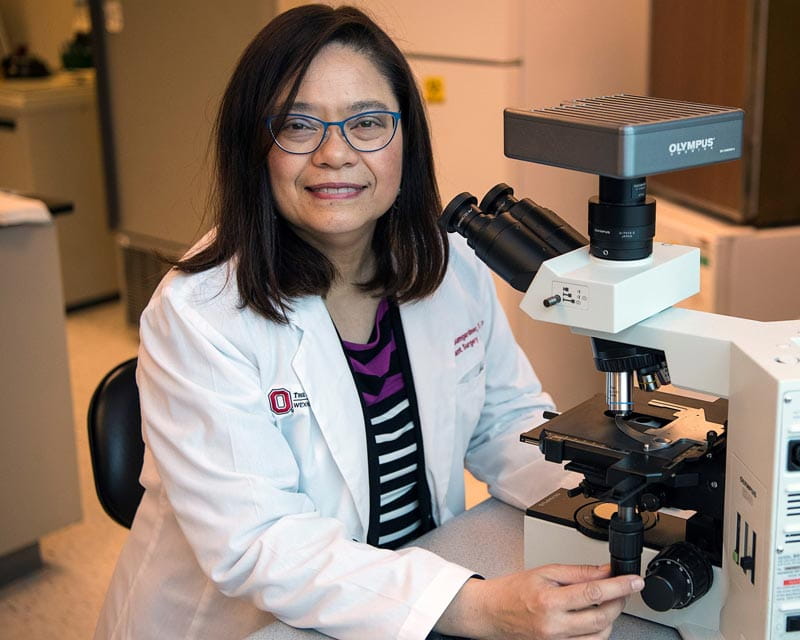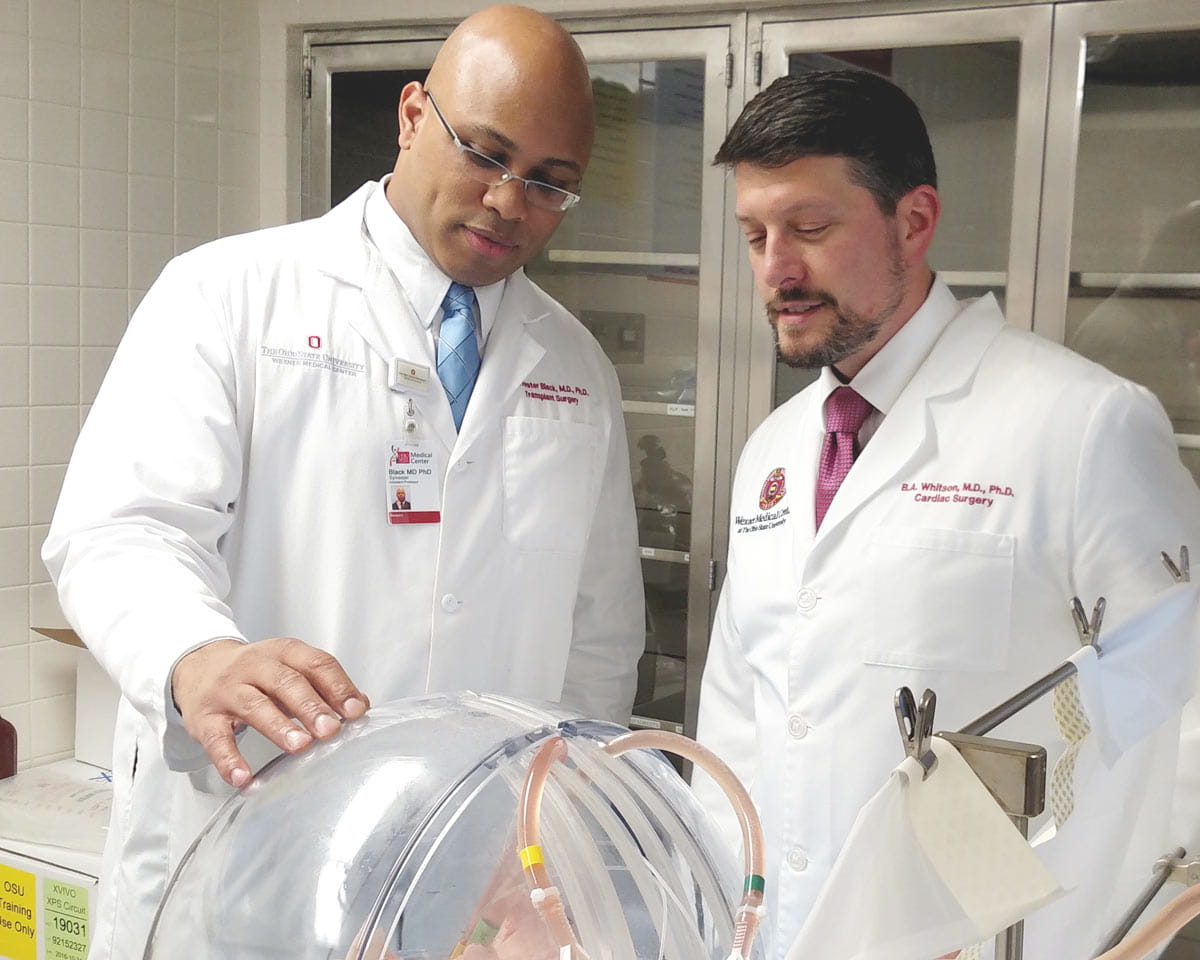
Bumgardner Laboratory
Transplant Immunobiology
The Ohio State University Wexner Medical Center is a pioneer in solid organ transplantation. In 2022, the Ohio State Wexner Medical Center ranked among the top 20 busiest transplant programs in the nation, with 525 surgeries completed.
However, there remains a gap between the number of viable organs and the number of patients who need a life-saving transplant.
The Organ Assessment and Repair Center is helping close this gap.

Ohio State’s innovative Organ Assessment and Repair Center uses an advanced medical technology called ex vivo organ perfusion, with individual machines designed specifically for the kidney, liver, heart or lung.
Placing recovered organs in these devices amplifies the time available for assessment and potential repair prior to transplantation. The result is a larger, healthier pool of available donor organs — which can ultimately lead to better outcomes for more patients.
Donated organs have been traditionally transported and stored on ice until they are transplanted into the recipient. With ex vivo perfusion, the organ is placed in a clear plastic box and attached to tubes that provide warm, oxygenated and nutrient-enriched blood to mimic the human body. It’s like a mini intensive-care unit for the organ, and the advantages of this approach are significant:
 Our organ recovery team
Our organ recovery team
In addition to ex vivo perfusion, another key to Ohio State's success is the Organ Recovery Team (ORT), which evaluates and coordinates transplantation of organs from across the country.
As of 2023, the team has eight organ recovery specialists and a surgeon working 24/7 behind the scenes to manage all logistics from organ recovery through perfusion and transplantation. This centralization of efforts keeps the Comprehensive Transplant Center functioning at the highest level, and it frees the surgical team to focus on surgery preparation and patient care.
In its first year, the ORT fielded more than 5,000 organ offers and arranged for more than 150 organ recovery transport flights for kidney, liver, pancreas, heart and lung transplantations. It now reviews 15-20 organ offers each day.
Located on the Ohio State Wexner Medical Center’s main medical campus, the Organ Assessment and Repair Center was established in 2015, and the medical center completed its first ex vivo perfusion — a lung — in 2016.
In 2019, surgeon-scientists and researchers at The Ohio State University College of Medicine became the first in central Ohio to test liver perfusion as one of 12 health care centers participating in the TransMedics Organ Care System (OCS) Liver PROTECT U.S. clinical trial. In August 2022, Ohio State adopted the OrganOx liver perfusion system. This technology is utilized several times per month to augment and enhance donor livers, which only increases the chances of transplantation for patients on the waiting list.
Fueling additional advancements and insight are the COPPER lab, where a multidisciplinary team continues to study extended ex vivo donor organ perfusion and both the Bumgardner Transplant Immunobiology Lab and the Schenk Transplant Immunology Lab, which investigate immune responses to support development of new immunotherapies that may prolong the survival of transplanted organs.

An error occurred loading stories. Please contact the webmaster at webmaster@osumc.edu.